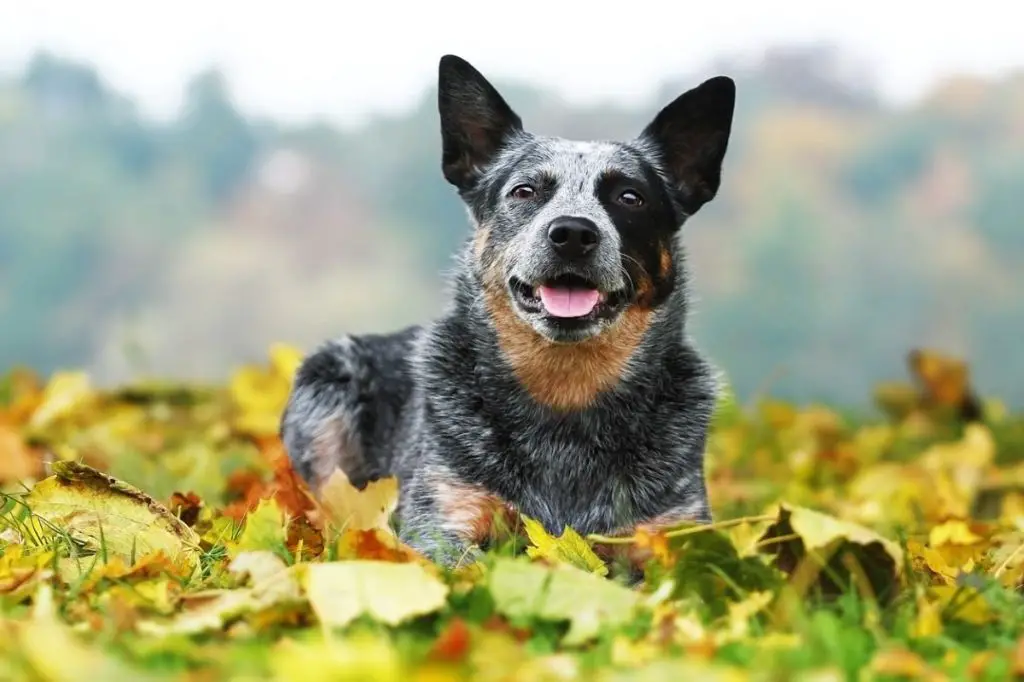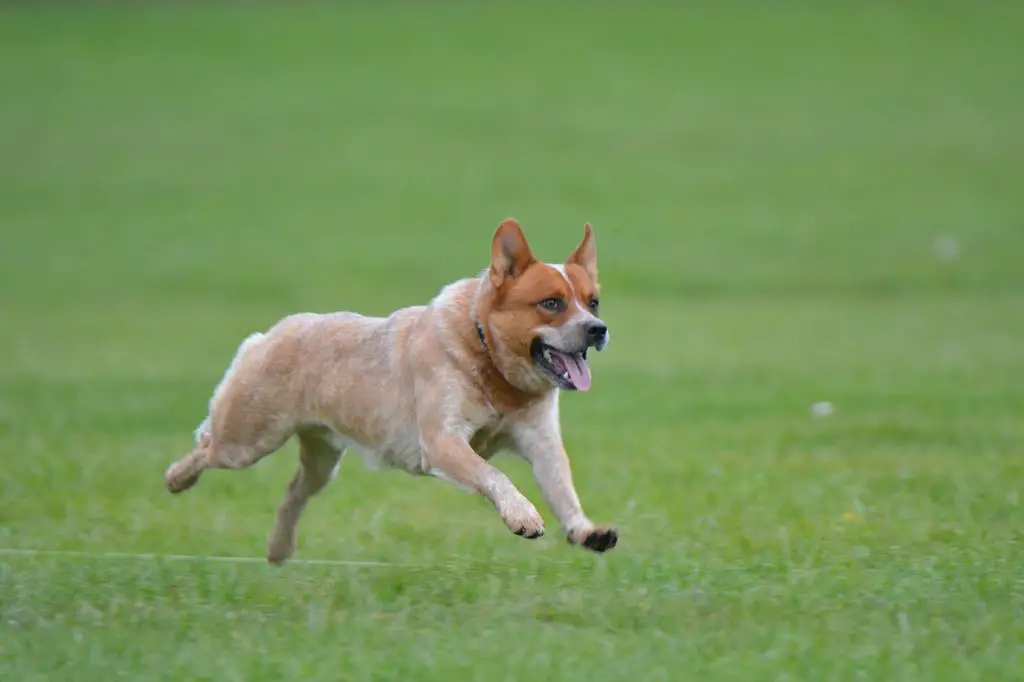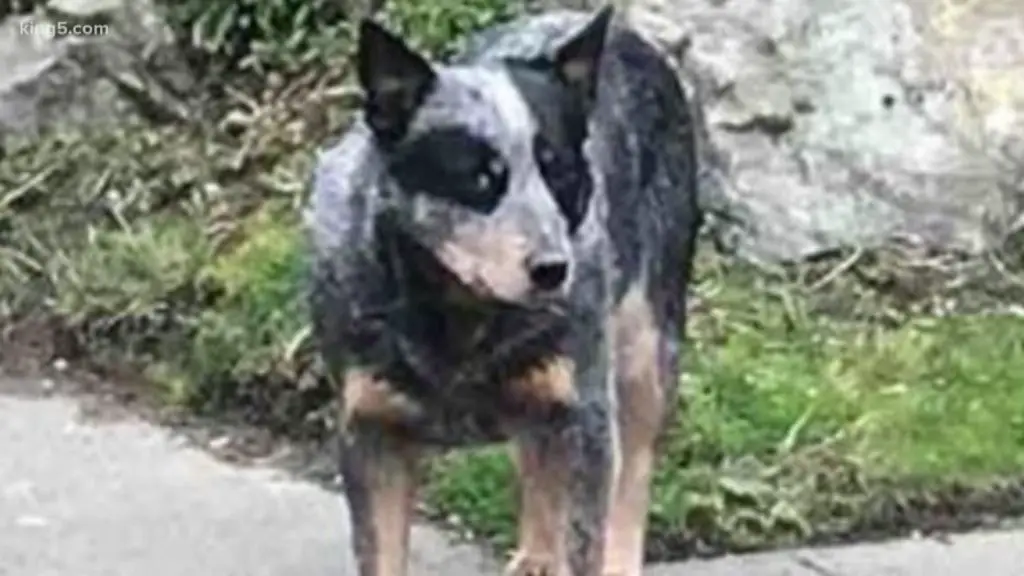Introduction
The Australian Cattle Dog, often referred to as the Blue Heeler or Queensland Heeler, is a breed with a rich history as a herding and working dog. They were first bred in the 19th century by mixing hardy Dingoes with other herding breeds like Scottish Collies. Their purpose was to herd cattle over the vast ranches and rough terrain of Australia. Today, Australian Cattle Dogs are still prized for their energy, intelligence and working ability, but they also make lovable family companions.https://cattledogthings.com/australian-cattle-dog-behavior/
Australian Cattle Dogs have strong herding instincts and high energy levels. Without proper training and exercise, they can sometimes use their instincts in unwanted ways, like nipping at people’s heels or even running away. Understanding the breed’s characteristics is key to preventing and managing any unwanted behaviors.
Reasons Why Australian Cattle Dogs Run Away
Australian Cattle Dogs were originally bred to herd cattle across long distances in the Australian Outback. This means they have very strong herding instincts bred into them over many generations. If an Australian Cattle Dog feels understimulated or bored, they may try to satisfy their herding needs by roaming and attempting to “herd” cars, people, or other animals (1). This can lead to them wandering off, sometimes quite far from home.
Australian Cattle Dogs are extremely energetic working dogs that need a lot of physical and mental exercise (2). If they are not provided adequate outlets for their energy, they may escape simply to burn off excess energy. Australian Cattle Dogs that are left alone for long periods without exercise or stimulation are especially prone to escaping due to boredom and pent up energy.
Australian Cattle Dogs are prone to anxiety and stress when left alone (3). Their close bonds with their owners means they can become very distressed when separated from them for long periods. An anxious Australian Cattle Dog may escape to try and find its owner or simply relieve stress. Providing distracting toys or chews and keeping departures/arrivals low key can help reduce separation anxiety.

Overall, Australian Cattle Dogs may run away or escape due to boredom, lack of stimulation, separation anxiety, or their innate herding instincts. Providing them proper outlets and exercise can reduce the chances of them roaming off.
Ways to Prevent Your Australian Cattle Dog From Running Off
There are several effective ways to help prevent your Australian cattle dog from running off, including:
Proper Exercise

Australian cattle dogs are extremely energetic working breeds that need plenty of exercise and mental stimulation. Make sure your dog gets at least an hour of vigorous exercise every day, such as jogging, hiking, swimming, playing fetch, or participating in a dog sport like agility or flyball. A well-exercised dog is less likely to escape simply out of boredom or excess energy.
Training
Obedience training is essential for any dog, but especially active and independent breeds like Australian cattle dogs. Teach and reinforce strong recall skills and practice commands like “wait” and “stay.” Attending obedience classes can be very beneficial. You want your dog to listen even when distracted outside the home.
Secure Yard Fencing
Check your fence regularly for any weak spots or potential escape routes. Cover the bottom of the fence if there are any gaps your dog could squeeze under. Extend fence height if your dog is able to jump over. Consider adding angled fencing overhangs or wire mesh to make climbing out more difficult. Electronic boundary systems can also be effective.
ID Tags
Make sure your dog is always wearing a collar with ID tags listing your current contact info. Microchipping your dog is also highly recommended as a permanent form of identification if he ever gets lost.
What to Do if Your Australian Cattle Dog Runs Away
If your Australian cattle dog manages to run off, don’t panic. There are several steps you should take to try and locate your lost dog.
First, thoroughly search nearby areas where your dog may have wandered. Check places like parks, trails, and wooded areas within a few miles from where they went missing. Make sure to bring along treats or toys that make noise to try and attract your dog’s attention.
Next, contact local animal shelters and animal control to file a lost dog report. Provide them with a detailed description of your dog along with any photos you may have. Check back regularly to see if anyone matching your dog’s description has been brought in.
Post about your lost dog online through websites like Craigslist or Nextdoor. Include any distinct markings or characteristics and let people know if your dog is microchipped. Also post info and photos on lost pet Facebook groups specific to your area.
Make and distribute “Lost Dog” flyers with your dog’s photo and your contact info to hang up around town. The more visibility for your lost pup, the better chances of someone recognizing them.
Stay vigilant and don’t give up hope. Many lost dogs are reunited with their owners within a couple weeks if all the right steps are taken. Just be sure to act quickly when your Australian cattle dog first goes missing for the best chance of getting them back home safely.
Using Technology to Find a Lost Australian Cattle Dog
There are various technological options to help locate and track down a lost Australian cattle dog. Two useful technologies for finding lost pets are microchips and GPS trackers.

Nearly all veterinarians recommend microchipping your Australian cattle dog. A microchip is a small, implanted chip that contains a unique ID number. All animal shelters and veterinarians have scanners to detect these chips. So if your lost dog ends up at a shelter, the staff can scan it to get your contact information and notify you of your dog’s whereabouts. According to the American Humane Society, the return-to-owner rate for microchipped pets is ten times higher than unchipped pets. Make sure to register your dog’s microchip and keep that information updated if you move or change phone numbers. (Source)
GPS pet trackers are another useful technological option for finding lost pets. These devices attach to your dog’s collar and allow you to monitor your dog’s location in real-time via a smartphone app. Some popular GPS pet trackers include Whistle, Tractive, and Fi. If your Australian cattle dog runs off, you can check the app to see where it is and then go recover it. Some trackers even notify all users in the area that a pet is lost nearby so they can help search. Just make sure to regularly charge the tracker battery. (Source)
Creating ‘Lost Dog’ Flyers and Notifications
Creating eye-catching and informative ‘lost dog’ flyers is a great way to spread the word about your missing Australian Cattle Dog. Here are some tips for making effective flyers:
Include a clear, recent photo of your dog. This will help people instantly recognize him/her if spotted. Make sure to note any distinguishing features like color patterns or markings.
Provide key details like your dog’s name, breed, gender, age, size, and the date/location where he/she went missing. Mention if your dog is microchipped or wearing tags.
Add your name and multiple contact details like phone number, email, and physical address so people can easily reach you if they spot your dog.
Offer a reward to incentivize people to be on the lookout. But avoid listing the reward amount on public flyers to prevent fraudulent claims.
Keep the flyer design simple, bold, and easy to read from a distance. Use bright, contrasting colors. Include the words “Lost Dog” prominently.
Once you’ve made the flyers, distribute them widely in your neighborhood and surrounding areas. Post on community boards at grocery stores, parks, vet clinics, pet stores, etc. You can also use online tools like Canva to make customized flyers.
In addition to physical flyers, leverage digital channels to spread the word. Share your flyer on neighborhood Facebook groups, Nextdoor, Ring Neighbors app, local lost pet sites, etc. The more widely you distribute the flyers, the better chance of someone recognizing your lost dog.
Working With Local Shelters if Your Dog is Lost
If your Australian Cattle Dog goes missing, one of the first places to check is your local animal shelters and humane societies. When a lost dog is brought into a shelter, staff will check for identification tags, scan for a microchip, and photograph the dog to post online or on bulletin boards for potential owners to see.
Be sure to call and visit your local shelters in person as soon as you realize your dog is missing to see if they have received any Australian Cattle Dogs matching your dog’s description. Provide the staff with a detailed description of your dog along with any distinguishing marks or features. Check back regularly in the days after your dog has gone missing, as new dogs are brought in daily.
You can also leave a lost pet report with shelters that will contact you if an Australian Cattle Dog fitting the description is brought in. Leave your contact information and ask to be updated if any similar dogs come through. Don’t forget to follow up with a phone call if you don’t hear back.
It’s helpful to have a recent photo of your Australian Cattle Dog ready to show shelters you contact. Clear photos will assist the staff in identifying your dog if it arrives at the facility.
Many shelters also provide online search features on their websites allowing you to scroll through photos of dogs currently in their care. Checking regularly can help you spot your missing dog more quickly if it winds up in a shelter.
While visiting local shelters expand your search area beyond just the town or city you live in. Dogs can travel surprising distances when lost, so contact shelters in the wider surrounding region as well. Don’t lose hope if your dog doesn’t initially turn up at nearby facilities.
Reuniting With Your Lost Australian Cattle Dog
Bringing a lost Australian cattle dog home can be an extremely emotional and rewarding experience. However, it’s important to be aware that the experience of being lost has likely been stressful and frightening for your dog. This means you may need to allow some time for them to adjust back to normal life and re-establish their bond with you.

When you first reunite with your dog, avoid overwhelming them. Keep your greeting low key and give them some space to become re-oriented. Bring them to a quiet, familiar place in your home and allow them to relax. Offer them some water and a small meal.
Be alert for any unusual behaviors that suggest your dog is having difficulty adjusting back home. Symptoms like appetite changes, unusual vocalizations, hiding, or house soiling may indicate anxiety or stress. If these persist beyond the initial days after returning home, consult your veterinarian.
You’ll need to reinforce training and rules that your dog previously knew. Take them for leashed walks and practice basic obedience commands. Positively reinforce desired behaviors with treats and praise. Be patient and understanding during this transition period.
The key is to make your dog feel safe, comfortable, and loved. Maintain a predictable routine, give them affection on their terms, and avoid punishment. With time and consistency, your dog should soon settle back into their home.
Some dogs may try to bolt or run away again after being lost. Keep your dog leashed when outside and monitor doors/gates. With renewed training, your dog should adapt back to their normal habits.
Most importantly, focus on rebuilding the strong bond you share with your beloved dog. They’ll take cues from your calm, reassuring energy. Celebrate having your Australian cattle dog home safe and focus on creating positive new memories together.
Preventing Your Australian Cattle Dog From Running Away Again
If your Australian Cattle Dog has run away before, it’s important to take steps to prevent it from happening again. Some tips include:
Reinforce training. Work on training your dog on basic commands like “come” and “stay.” Practice these commands consistently both at home and in distracting public environments. Always reward your dog with treats and praise when it follows commands. Having a well-trained dog reduces the chances it will bolt.
Increase exercise. Australian Cattle Dogs are very energetic working breeds. Make sure your dog gets plenty of exercise and mental stimulation each day through long walks, playing fetch, agility training, etc. A tired dog is less likely to roam. (Source)
Check yard security. Regularly inspect your fence for holes or weak spots where your dog could squeeze under or through. Make sure gates are securely latched. Eliminate any objects near the fence line that your dog could use to climb over. Keep your dog supervised when in the yard to prevent escapes.
Use a long lead outdoors. When in unfenced areas, keep your dog on a 30+ foot training leash so it can’t run off but still has some freedom to explore and move. Practice recall training in these environments.
Consult a trainer. If your dog is highly prone to running away, seek help from a professional dog trainer or behaviorist. They can assess your dog and provide customized training tips.
With consistency, training, and security measures, you can help stop your Australian Cattle Dog from taking off again.
When to Consider Re-Homing Your Australian Cattle Dog
If your Australian cattle dog continues to run away persistently despite extensive training and preventative measures, you may need to consider re-homing your dog. Chronic running away can be stressful and dangerous for both you and your dog.
Re-homing should not be the first option, but rather a last resort after you’ve exhausted other training techniques and management solutions. Work extensively with a professional trainer or behaviorist to try to resolve the running away behavior before considering re-homing.
However, if your Australian cattle dog continues to run off repeatedly and shows extreme distress from being left alone, re-homing may be kindest for your dog’s well-being. Separation anxiety and isolation distress are common reasons why cattle dogs run away chronically.
According to this Reddit thread, re-homing a dog with severe separation anxiety to a home where he/she can get more constant companionship may greatly improve quality of life. But you’ll want to be sure the new home is fully aware of the dog’s needs and prepared to manage the anxiety issues.
Additionally, according to this article, re-homing a dog with an unsuitable energy level or activity mismatch for your household may be warranted if it leads to escape behaviors. An Australian cattle dog who doesn’t get enough exercise and mental stimulation might run away frequently searching for an outlet.
While heartbreaking, re-homing to a more suitable environment may be the most responsible choice if it provides the best care for your individual dog. Be sure to take time finding the ideal adopter or rescue organization that fully understands your cattle dog’s needs and challenges.
